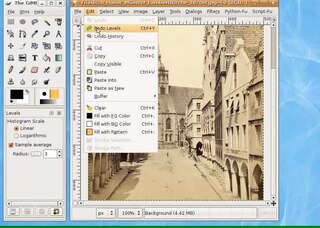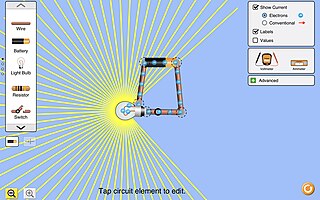Multimedia refers to the integration of multiple forms of content, such as text, audio, images, video, and interactive elements into a single digital platform or application. This integration allows for a more immersive and engaging experience compared to traditional single-medium content. Multimedia is utilized in various fields, including education, entertainment, communication, game design, and digital art, reflecting its broad impact on modern technology and media.

Online chat is any direct text-, audio- or video-based (webcams), one-on-one or one-to-many (group) chat, using tools such as instant messengers, Internet Relay Chat (IRC), talkers and possibly MUDs or other online games. Online chat includes web-based applications that allow communication – often directly addressed, but anonymous between users in a multi-user environment. Web conferencing is a more specific online service, that is often sold as a service, hosted on a web server controlled by the vendor. Online chat may address point-to-point communications as well as multicast communications from one sender to many receivers and voice and video chat, or may be a feature of a web conferencing service.

A screencast is a digital recording of computer screen output, also known as a video screen capture or a screen recording, often containing audio narration. The term screencast compares with the related term screenshot; whereas screenshot generates a single picture of a computer screen, a screencast is essentially a movie of the changes over time that a user sees on a computer screen, that can be enhanced with audio narration and captions.
Educational technology is the combined use of computer hardware, software, and educational theory and practice to facilitate learning. When referred to with its abbreviation, "EdTech", it often refers to the industry of companies that create educational technology. In EdTech Inc.: Selling, Automating and Globalizing Higher Education in the Digital Age, Tanner Mirrlees and Shahid Alvi (2019) argue "EdTech is no exception to industry ownership and market rules" and "define the EdTech industries as all the privately owned companies currently involved in the financing, production and distribution of commercial hardware, software, cultural goods, services and platforms for the educational market with the goal of turning a profit. Many of these companies are US-based and rapidly expanding into educational markets across North America, and increasingly growing all over the world."
Technology integration is defined as the use of technology to enhance and support the educational environment. Technology integration in the classroom can also support classroom instruction by creating opportunities for students to complete assignments on the computer rather than with normal pencil and paper. In a larger sense, technology integration can also refer to the use of an integration platform and application programming interface (API) in the management of a school, to integrate disparate SaaS applications, databases, and programs used by an educational institution so that their data can be shared in real-time across all systems on campus, thus supporting students' education by improving data quality and access for faculty and staff.
"Curriculum integration with the use of technology involves the infusion of technology as a tool to enhance the learning in a content area or multidisciplinary setting... Effective technology integration is achieved when students can select technology tools to help them obtain information on time, analyze and synthesize it, and present it professionally to an authentic audience. Technology should become an integral part of how the classroom functions—as accessible as all other classroom tools. The focus in each lesson or unit is the curriculum outcome, not the technology."

User-generated content (UGC), alternatively known as user-created content (UCC), emerged from the rise of intelligent web services which allow everyday users to create content, such as images, videos, audio, text, testimonials, and software and interact with other users. Online content aggregation platforms such as social media, discussion forums and wikis by their interactive and social nature, no longer produce multimedia content but provide tools to produce, collaborate, and share a variety of content, which can affect the attitudes and behaviors of the audience in various aspects. This transforms the role of consumers from passive spectators to active participants.
Individual Learning Plan or ILP is a user (student) specific program or strategy of education or learning that takes into consideration the student's strengths and weaknesses. While normal classroom or distance education is based on the premise that all should get equal attention, be exposed to the same curriculum and evaluated on the same pattern, ILP presumes that the needs of individual students are different, and thus, must be differently addressed. Emphasis on the student's role in the learning experience has been shown in research to be crucial to a productive learning experience.
Podcasting refers to the creation and regular distribution of podcasts through the Internet. Podcasts, which can include audio, video, PDF, and ePub files, are subscribed to and downloaded through web syndication or streamed online to a computer or mobile device. Subscribers are then able to view, listen to, and transfer the episodes to a variety of media players, or podcatchers. Though similar to radio, there is no larger regulatory group or oversight with podcasts. Instead, podcasts simply consist of the creators and their listeners. As the technology gained popularity in the early 2000s, the uses of podcasting grew from simply the delivery of content to also creative and responsive purposes.
Participatory culture, an opposing concept to consumer culture, is a culture in which private individuals do not act as consumers only, but also as contributors or producers (prosumers). The term is most often applied to the production or creation of some type of published media.

TeacherTube is a video sharing website. It is designed to allow those in the educational industry, particularly teachers, to share educational resources such as video, audio, documents, photos, groups and blogs. The site contains a mixture of classroom teaching resources and others designed for teacher training. A number of students have also uploaded videos that they have made as part of K-12 and college courses. As of July 2008, the website contained over 26,000 videos. In October 2010, TeacherTube had over a million members and over 400,000 educational videos. It has found favor with educators from institutions where YouTube content is blocked by content filtering systems.
Teachinghistory.org, also known as the National History Education Clearinghouse (NHEC), is a website that provides educational resources for the study of U.S. history.
Social learning tools are tools used for pedagogical and andragogical purposes that utilize social software and/or social media in order to facilitate learning through interactions between individuals and systems. The idea of setting up "social learning tools" is to make education more convenient and widespread. It also allows an interaction between users and/or the software which can bring a different aspect to learning. People can acquire knowledge by distance learning tools, for instance, Facebook, Twitter, Khan Academy and so on. Social learning tools may mediate in formal or informal learning environments to help create connections between learners, instructors and information. These connections form dynamic knowledge networks. Social learning tools are used in schools for teaching/learning and in businesses for training. Within a school environment, the use of social learning tools can affect not only the user (student) but his/her caretaker as well as his/her instructor. It brings a different approach to the traditional way of learning which affects the student and his/her support circle. Companies also use social learning tools. They used them to improve knowledge transfer within departments and across teams. Businesses use a variety of these tools to create a social learning environment. They are also used in company settings to help improve team work, problem solving, and performance in stressful situations.
Khan Academy is an American non-profit educational organization created in 2006 by Sal Khan. Its goal is to create a set of online tools that help educate students. The organization produces short video lessons. Its website also includes supplementary practice exercises and materials for educators. It has produced over 10,000 video lessons teaching a wide spectrum of academic subjects, including mathematics, sciences, literature, history, and computer science. All resources are available for free to users of the website and application.

A flipped classroom is an instructional strategy and a type of blended learning. It aims to increase student engagement and learning by having pupils complete readings at home, and work on live problem-solving during class time. This pedagogical style moves activities, including those that may have traditionally been considered homework, into the classroom. With a flipped classroom, students watch online lectures, collaborate in online discussions, or carry out research at home, while actively engaging concepts in the classroom with a mentor's guidance.
Mashups are a combination of two or more data sources that have been integrated into one source. They typically consist of graphics, texts, audio clips, and video that have been sourced from various media such as blogs, wikis, YouTube, Google Maps, etc., into a new product. Remix is a related term, referring to how data sources have been combined to produce a constellation of elements that were not originally intended by the creators. Mashups rely on open and discoverable resources, open and transparent licensing, and open and remixable formats.

PhET Interactive Simulations, a project at the University of Colorado Boulder, is a non-profit open educational resource project that creates and hosts explorable explanations. It was founded in 2002 by Nobel Laureate Carl Wieman. PhET began with Wieman's vision to improve the way science is taught and learned. Their stated mission is "To advance science and math literacy and education worldwide through free interactive simulations."

The gamification of learning is an educational approach that seeks to motivate students by using video game design and game elements in learning environments. The goal is to maximize enjoyment and engagement by capturing the interest of learners and inspiring them to continue learning. Gamification, broadly defined, is the process of defining the elements which comprise games, make those games fun, and motivate players to continue playing, then using those same elements in a non-game context to influence behavior. In other words, gamification is the introduction of game elements into a traditionally non-game situation.

Google Classroom is a free blended learning platform developed by Google for educational institutions that aims to simplify creating, distributing, and grading assignments. The primary purpose of Google Classroom is to streamline the process of sharing files between teachers and students. As of 2021, approximately 150 million users use Google Classroom.

Vyond is an American cloud-based animated video creation platform created by Alvin Hung in 2007 and developed by the San Mateo, California-based GoAnimate, Inc.
Social media in education is the use of social media to enhance education. Social media are "a group of Internet-based applications...that allow the creation and exchange of user-generated content". It is also known as the read/write web. As time went on and technology evolved, social media has been an integral part of people's lives, including students, scholars, and teachers. However, social media are controversial because, in addition to providing new means of connection, critics claim that they damage self-esteem, shortens attention spans, and increase mental health issues.









